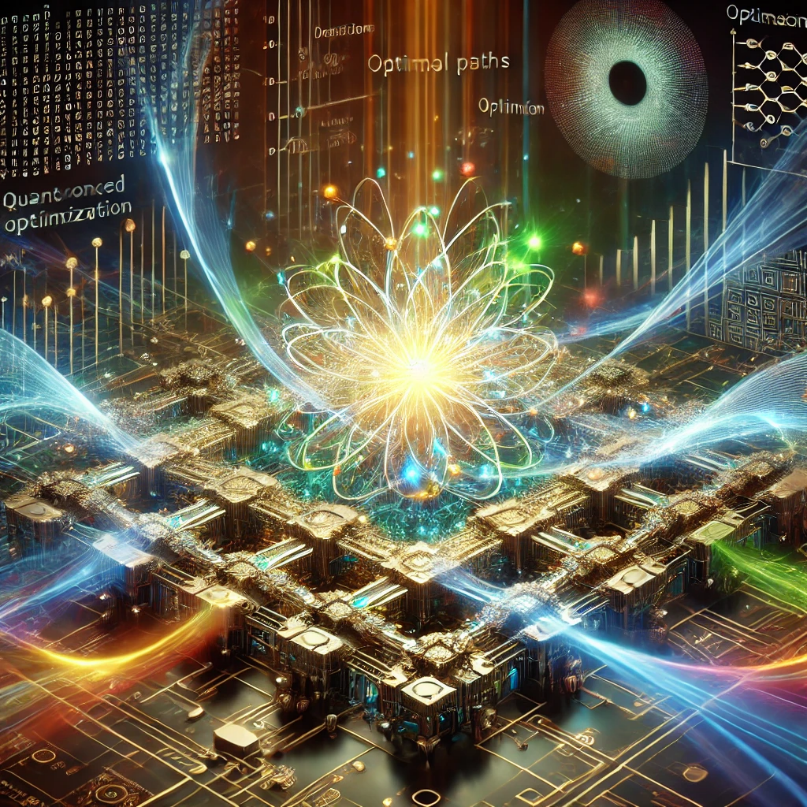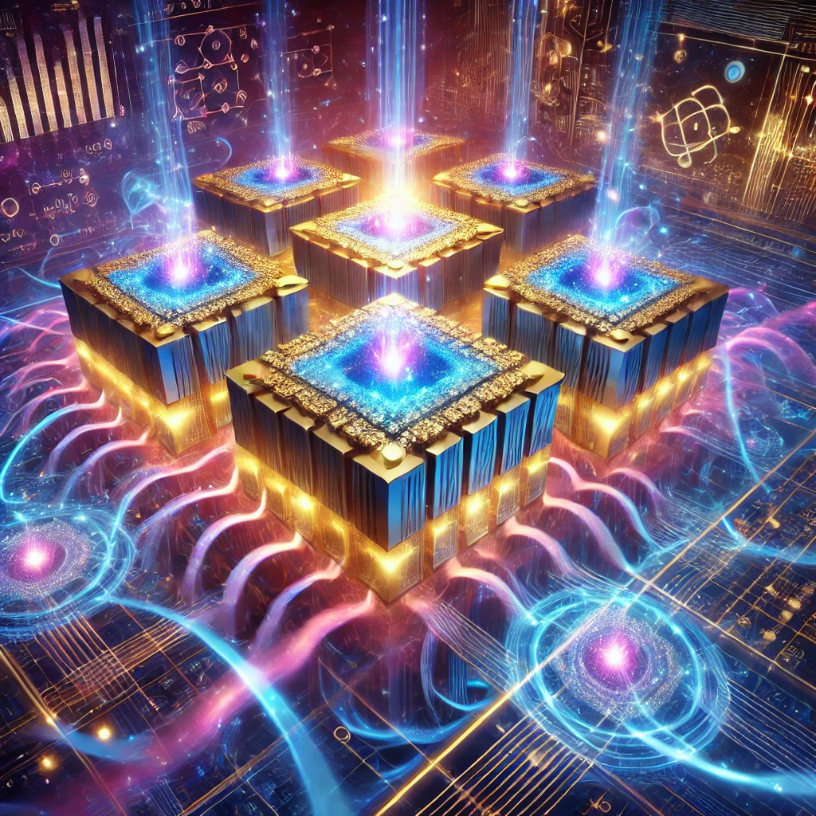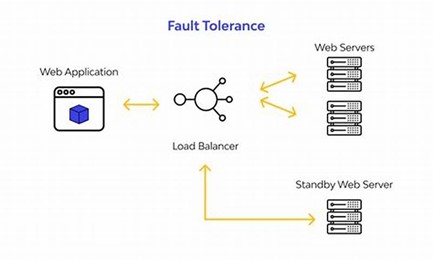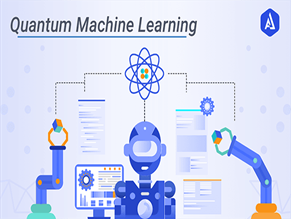What breakthroughs are necessary for AI to fully leverage quantum capabilities?

What breakthroughs are necessary for AI to fully leverage quantum capabilities?
by Maximilian 10:35am Feb 01, 2025

For AI to fully leverage the capabilities of quantum computing, several critical breakthroughs are needed across both quantum computing hardware and AI algorithms. While quantum computing holds immense potential to revolutionize AI, there are still significant challenges that need to be addressed to realize its full capabilities. These breakthroughs can be categorized into three main areas:
1. Quantum Hardware Advancements
Quantum computing hardware needs to overcome several limitations to support large-scale, practical AI applications. The current generation of quantum computers, known as Noisy Intermediate-Scale Quantum (NISQ) devices, is still in its infancy, with limited qubit numbers and high error rates. To enable AI to fully benefit from quantum computing, the following hardware breakthroughs are essential:
a. Scalability of Quantum Computers
Current State: Most quantum computers today have a relatively small number of qubits (tens to hundreds), which limits their ability to solve real-world problems that require more complex and larger-scale computations.
Necessary Breakthrough: Scalable quantum processors with thousands or millions of qubits are needed to support AI tasks that require high-dimensional data processing, large parameter spaces, and deep models (e.g., deep learning).
Challenge: Developing reliable quantum processors that can maintain coherence across many qubits and handle error rates effectively.

b. Error Correction and Fault Tolerance
Current State: Quantum systems are prone to errors due to decoherence and noise. This makes them unsuitable for practical large-scale computations, as the errors grow exponentially with the number of qubits.
Necessary Breakthrough: Quantum error correction is critical for achieving fault tolerance. Breakthroughs are needed to develop error-correction codes that can handle large-scale computations without requiring an unmanageable overhead of extra qubits.
Challenge: Quantum error correction is highly resource-intensive and requires many additional qubits. Efficient error-correction schemes will be needed to ensure that quantum computers can reliably execute complex AI algorithms.

c. Quantum Coherence and Stability
Current State: Quantum bits (qubits) are highly sensitive to their environment and lose their quantum state (decoherence) quickly, limiting the time they can be used for computation.
Necessary Breakthrough: Increasing the coherence time of qubits—essentially how long they can maintain their quantum state—is crucial for performing the necessary operations for AI tasks, which can involve long sequences of quantum gates and complex computations.
Challenge: Advances in qubit design, such as using topological qubits, or new cooling and isolation techniques are necessary to achieve stable and reliable quantum hardware.
2. Quantum Algorithms for AI
Quantum computing can offer exponential speedups for certain computational tasks. To fully realize quantum-enhanced AI, quantum algorithms must be developed and optimized to exploit quantum advantages in machine learning, optimization, and data processing. Key breakthroughs are needed in the following areas:
a. Quantum Machine Learning Algorithms
Current State: Quantum machine learning (QML) algorithms, such as quantum versions of classical algorithms like quantum support vector machines (QSVM), quantum neural networks (QNN), and quantum k-nearest neighbors (QkNN), are still in their early stages.
Necessary Breakthrough: The development of new quantum machine learning algorithms that outperform classical counterparts in practical, real-world AI applications. These algorithms need to demonstrate advantages in speed, scalability, or accuracy, especially for tasks such as optimization, classification, clustering, and feature extraction.
Challenge: Creating algorithms that are not only theoretically promising but also practical for deployment on current or near-future quantum hardware. This involves bridging the gap between quantum theory and real-world applications.

b. Hybrid Quantum-Classical Systems
Current State: Quantum computing may not yet be able to fully replace classical computing for all AI tasks, so hybrid quantum-classical systems are being explored, where quantum processors are used for specific tasks (e.g., optimization) and classical computers handle others (e.g., data preprocessing or post-processing).
Necessary Breakthrough: Improved quantum-classical hybrid algorithms that allow for seamless integration of quantum computing into existing AI workflows. Quantum computing needs to be used to accelerate specific bottlenecks in AI, such as optimization, while still maintaining the efficiency of classical systems for other tasks.
Challenge: Efficiently integrating quantum hardware into classical machine learning frameworks, such as TensorFlow or PyTorch, while optimizing the quantum operations for maximum impact.
c. Quantum-enhanced Optimization
Current State: Optimization is central to many AI models, including neural networks, where the goal is to minimize loss functions or maximize objective functions. Quantum optimization algorithms, like Quantum Approximate Optimization Algorithm (QAOA), have shown promise but are still in their infancy.
Necessary Breakthrough: Quantum optimization algorithms that can efficiently solve large, high-dimensional optimization problems in AI, which are often the bottleneck in training deep learning models. This includes breakthroughs in algorithms for faster convergence and better handling of noisy data.
Challenge: Developing quantum optimization methods that consistently outperform classical methods in realistic, large-scale AI training tasks.

d. Quantum Data Encoding
Current State: One of the challenges of quantum machine learning is how to encode classical data into quantum states efficiently. Encoding large datasets into quantum systems in a way that can be processed by quantum algorithms remains an unresolved issue.
Necessary Breakthrough: Efficient quantum data encoding techniques that can map classical data into quantum states without losing information or increasing complexity. This would enable quantum systems to process large-scale data in a way that enhances the performance of AI algorithms.
Challenge: Finding methods that allow data to be encoded in high-dimensional quantum states while preserving the information necessary for learning tasks.
3. Practical Integration and Ecosystem Development
Beyond hardware and algorithmic breakthroughs, practical integration of quantum computing into AI workflows requires the development of tools, platforms, and infrastructure that make quantum capabilities accessible to AI practitioners.
a. Quantum Programming Languages and Frameworks
Current State: There are emerging quantum programming languages and frameworks, such as Qiskit (IBM), Cirq (Google), and Penny Lane, which are designed to facilitate quantum programming.
Necessary Breakthrough: More user-friendly quantum programming environments that allow AI practitioners (who may not be experts in quantum mechanics) to easily leverage quantum computing in their AI models.
Challenge: Developing tools that abstract away the complexities of quantum computing, making it accessible to AI researchers and practitioners in a similar way that classical machine learning frameworks like TensorFlow or Py Torch have done.
b. Interdisciplinary Collaboration
Current State: Quantum computing and AI research are often conducted separately, and there is a gap between the quantum computing community and the AI community.
Necessary Breakthrough: Fostering greater collaboration between quantum physicists, computer scientists, and AI researchers to accelerate the development of quantum algorithms and their integration into AI applications.
Challenge: Building interdisciplinary teams that can bridge the gap between quantum theory and machine learning practice.
Conclusion
For AI to fully leverage quantum capabilities, breakthroughs in quantum hardware, quantum algorithms for machine learning, and the practical integration of quantum computing into AI workflows are essential. These advances will enable quantum systems to outperform classical systems in key areas such as optimization, data processing, and machine learning model training, ultimately leading to more efficient, scalable, and powerful AI systems. However, achieving these breakthroughs will require sustained effort and collaboration across quantum computing, machine learning, and software engineering fields.






